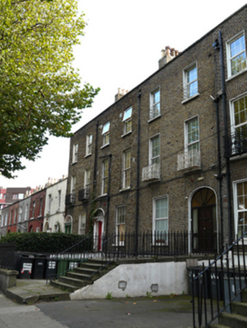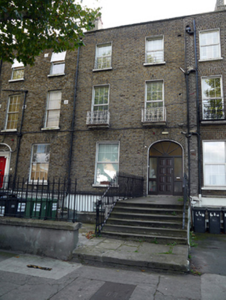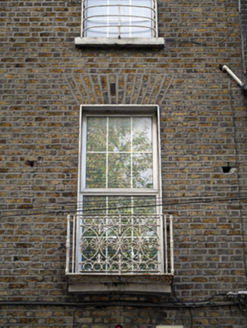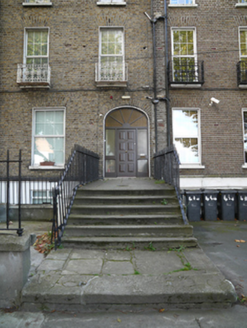Survey Data
Reg No
50011060
Rating
Regional
Categories of Special Interest
Architectural, Artistic
Original Use
House
In Use As
Apartment/flat (converted)
Date
1820 - 1840
Coordinates
316118, 235657
Date Recorded
12/10/2011
Date Updated
--/--/--
Description
Terraced two-bay three-storey house over exposed basement, built c.1830, as one of terrace of four similar houses with flat-roofed three-storey rendered extension. Now in multiple occupancy. M-profile slate roof, hipped to west of rear pitch and set behind parapet wall with granite coping and shared replacement uPVC hopper and downpipe breaking through to either end. Shared stepped brick chimneystacks to both party walls, all having clay pots. Yellow brick walls laid in Flemish bond on painted granite plinth course over rendered walls to basement level. Cement rendered to rear elevation. Gauged brick flat-arched window openings with patent rendered reveals, painted granite sills and replacement uPVC windows throughout. Decorative cast-iron balconettes to first floor and wrought-iron window guards to second. Gauged brick three-centred arched door opening with replacement hardwood doorcase. Door opens onto extended granite platform with six nosed granite steps enclosed by original wrought-iron railing with further platform and step to street. Front garden now paved in concrete and enclosed by original wrought-iron railing on low rendered wall with granite coping. Rear site enclosed by tall rubble stone wall with concrete block over and metal door.
Appraisal
The North Circular Road was laid out in 1763, and gradually developed over the next one hundred years. An Act of that year called for the making of more convenient approaches to the city. It was partly financed by toll gates located at the Park, Aughrim Street, Phibsborough and Dorset Street. It became a fashionable carriage promenade in the 1780s. This terraced brick house was built as one of four as part of a greater terrace of varying house types. This section of the street remained largely undeveloped until the Victorian period, with this terrace predating most houses on the street. While the house has lost its windows and doorcase, when considered with the remainder of the terrace it constitutes a reasonable example of the late Georgian residences that give the street its character. The balconettes provide decorative focus to the facade.







